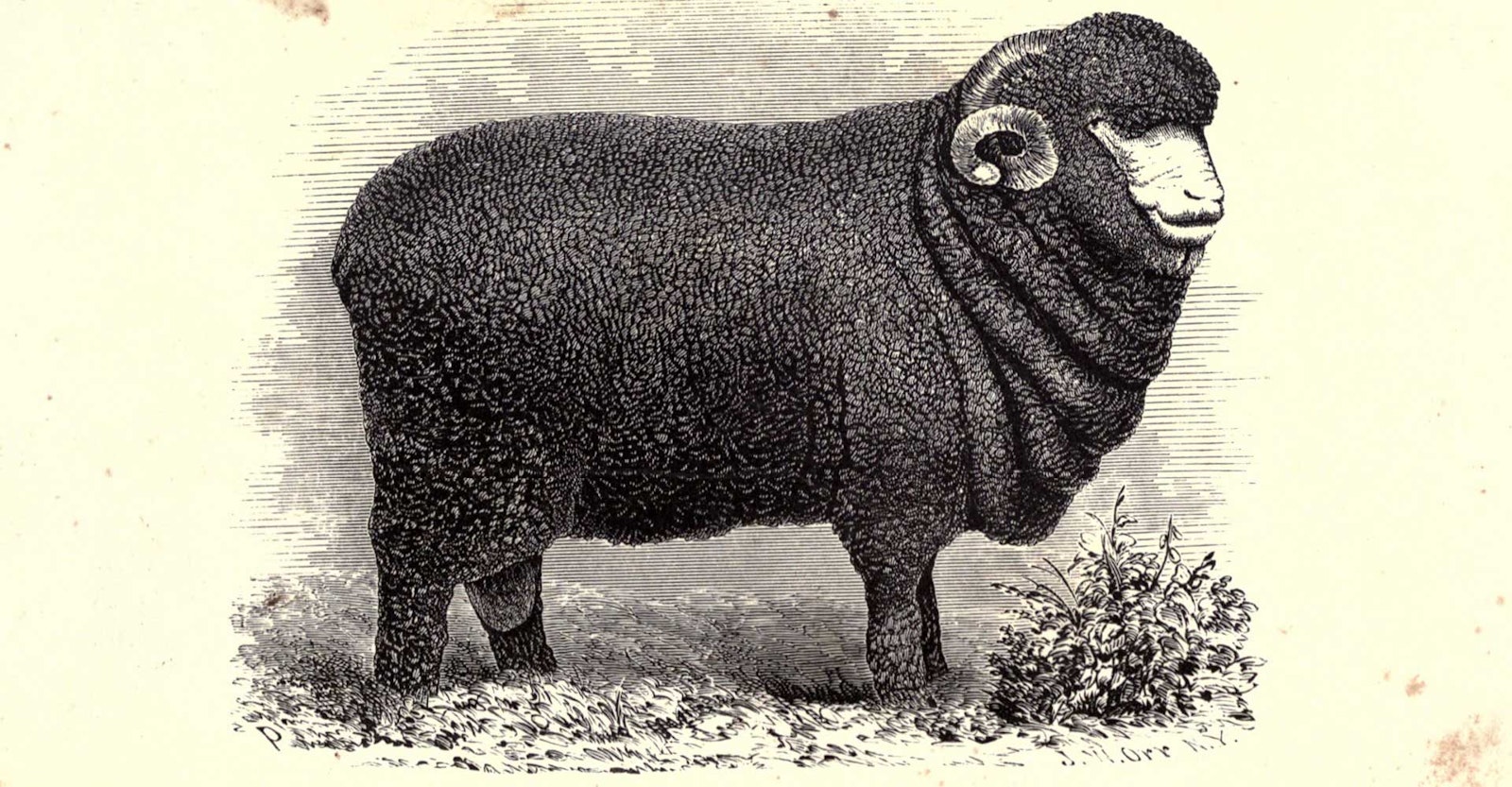Are you ready for more sheep facts? In the previous post, I introduced you to Merino sheep, which have a prestigious heritage. Here in part 2, we’ll dive into merino fiber itself and explore what makes it so special—and so valuable to crafters.
Fact #1
Merino fleece is denser than fleeces from other breeds because Merinos have more hair follicles per square inch of skin. This not only allows Merinos to produce a lot of wool fibers, dense fleeces also tend to stay cleaner as it is harder for dirt and vegetable matter to penetrate. There are even Merino strains that have been bred for extra wrinkly skin, which increases their overall surface area and thus the amount of fleece on each animal.
Fact #2
Merino fiber has an annual staple length of between 2–5 inches, and diameter ranges from 11.5–22 microns. Diameter determines fineness, which in turn determines use; for example, extrafine fibers are used for making suits, while coarser fibers are used for making socks. Wool under 17.70 microns in diameter is considered fine, and most commerical Merino wool falls under this category.1

Merino locks in natural colors from Chaotic Farm in Medina, Ohio. Photo by Matt Graves
Fact #3
Like most modern sheep breeds, Merinos have been bred for continuous wool growth and need to be sheared. If they aren’t, their fleeces will just keep growing, which can endanger them. You’ve probably seen photos of sheep found in New Zealand and Australia with crazy huge fleeces—Merinos with these “mega-fleeces” pop up every once in a while. These sheep typically have been separated from their herd somehow and haven’t been sheared in many years.
Although the photos are kinda funny (I’ll admit I chuckled the first time I saw a picture of Shrek, the New Zealand sheep with the giant fleece), the poor sheep are suffering under all that wooly weight. The wool that grows on the top of their head and cheeks can become so overgrown that unshorn Merinos can be "wool blind" and unable to see. It's important for them to be sheared annually.
Fact #4
Fleece weight varies from strain to strain. The smallest Merinos have fleeces that weigh between 6–13 pounds per year, whereas animals in the largest strains can have fleeces that weigh up to 40 pounds.2
Coming up in part 3, I’ll wrap up our discussion of Merino sheep. Until then, we're curious: what do you knit with Merino wool? Do you use it for garments, accessories, or both? Do you prefer other types of fiber for your handknits? You can send in your photos and comments here.
Put your best fiber forward,
Rachel
Rachel Koon is a former managing editor of Spin Off.
- “Wool Grading Systems," Laughing Lamb Fibers. laughinglambfibers.com/blogs/fabulous-fibers-n-such/115466371-wool-grading-systems
- “Peppin Merino,” Wikipedia, en.wikipedia.org/wiki/Peppin_Merino

